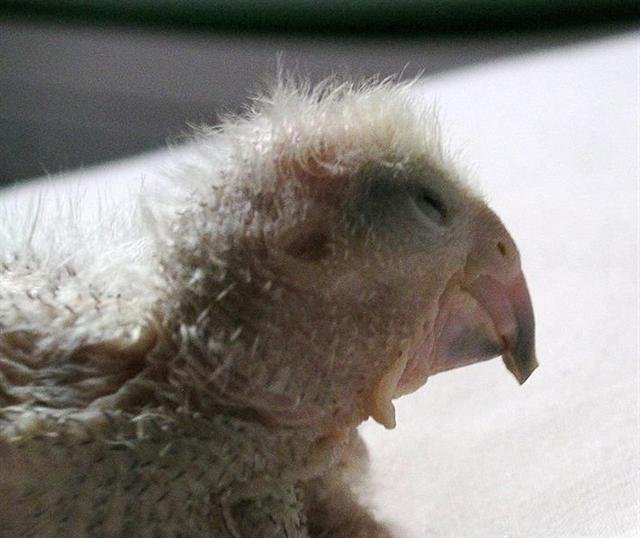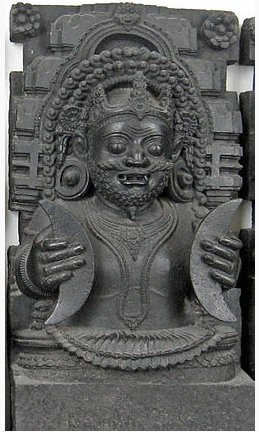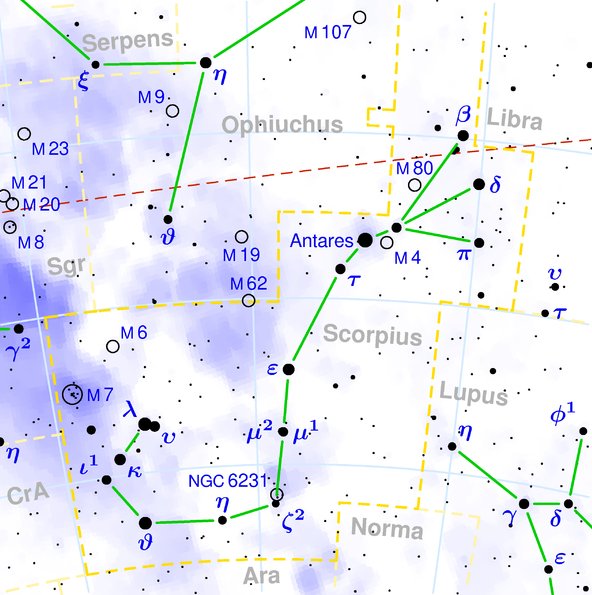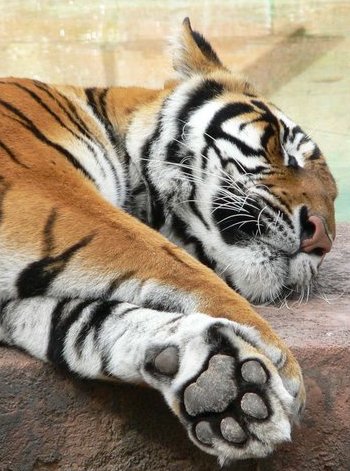6-8. We should complete our current tables with the stars invisibly
close to the Sun, because there was an ambivalence at the
equinoxes. At 16h the Full Moon should ideally be at
the right ascension line of Acrab (β Scorpii) and the
Forehead of the Scorpion (Jabhat al Acrab,
ω), while the Sun would be at *61 implying an allusion to day 61 =
March 1.
|
May 21 |
22 (142) |
23 |
24 |
25
(145, *65) |
26 |
|
Nov 19 |
20 (324, *244) |
21 |
22 |
23 |
24 |
 |
 |
 |
 |
 |
 |
|
Ea6-11 |
Ea6-12 |
Ea6-13 |
Ea6-14 |
Ea6-15 |
Ea6-16 |
|
koia - hoko henua - hakatupu |
mauga - ko koe - henua |
tagata - he taau - kiore |
hokohuki - kiore |
|
Tupu.
1. Shoot, sprout, bud; to sprout, to bud. 2.
Pregnant: vî'e tupu (o te poki); to be conceived
(of fetus in its mother's womb): he-tupu te poki i
roto i te kopú o toona matu'a. Vanaga. To grow, to
sprout, to germinate, to come forth, to conceive,
pregnant, germ; mea tupu, plant; tupu ke avai,
of rapid growth; tupu horahorau, precocious;
hakatupu, to produce, to stimulate growth, to
excite. P Pau.: fakatupu, to raise up, to create.
Mgv.: tupu, to grow, to conceive, to be pregnant.
Mq.: tupu, to grow, to sprout, to conceive. Ta.:
tupu, to grow, to sprout. Churchill. Mgv.:
Tupu, the best or worst, used of men or of bad
qualities. Sa.: tupu, king. Ma.: tupu,
social position, dignity. Churchill. |
|
REVERSED NAKSHATRA
→ CLOSE TO THE FULL MOON: |
|
16h (243.5)
ACRAB (Scorpion) =
β
Scorpii,
JABHAT AL ACRAB (Forehead of the Scorpion) =
ω
Scorpii
(243.3),
θ
Lupi,
RUTILICUS =
β
Herculis
(243.5),
MARFIK (Elbow) =
κ
Herculis
(243.7),
φ
Herculis (243.8) |
ψ
Scorpii (244.6),
LESATH (Sting) =
ν
Scorpii
(244.8) |
χ
Scorpii (245.1),
YED PRIOR (Hand in Front) =
δ
Ophiuchi,
δ
Tr.
Austr. (245.5) |
YED POSTERIOR (Hand Behind) =
ε
Ophiuchi,
RUKBALGETHI SHEMALI (Northern Knee of the Giant) =
τ
Herculis
(246.6).
δ
Apodis (246.7),
ο
Scorpii (246.8) |
Heart-5 (Fox)
σ
Scorpii
(247.0),
HEJIAN =
γ
Herculis
(247.2),
ψ
Ophiuchi (247.7) |
ρ
Ophiuchi (248.1),
KAJAM (Club) =
ω
Herculis
(248.3),
χ
Ophiuchi (248.5),
SHE LOW (Market Tower) =
υ
Ophiuchi,
Tr.
Austr. (248.7), ζ Tr. Austr. (248.8) |
 |
|
INVISIBLY CLOSE TO
THE SUN: |
|
υ Persei
(61.2) |
BEID (Egg) =
ο¹
Eridani
(62.2),
μ
Persei (62.8)
VINDEMIATRIX ( ε Virginis) |
Al Dabarān-2 (The Follower)
HYADUM I =
γ
Tauri (63.4)
*22.0 = *63.4 - *41.4 |
HYADUM II = δ¹ Tauri
(64.2) |
Net-19 (Crow)
AIN (Eye) =
ε
Tauri,
θ¹
Tauri,
θ²
Tauri (65.7) |
No star listed (66) |
 |
The star named
Beid (the Egg) - at the place where the Grape Gatherer culminated - should obviously refer to the
zero
situation;
... In the Hindu Bakshali Manuscript a
dark new moon face was used for the unknown (our X) → what is
inside an egg cannot be seen, the contents of the coming month
were uncertain ...
i.e.
before the Bird had revealed himself after having worked his way out
by using his egg tooth (→
manu tara).
|
May 27 |
28 (148, *68) |
29 |
30 |
 |
 |
 |
 |
|
Ea6-17 |
Ea6-18 |
Ea6-19 |
Ea6-20 (198) |
|
tagata mau - moa |
te honu paka |
moa |
kua kau |
|
Paka.
1. Dry; to become dry (of things);
pakapaka, to dry out. Te paka is also the
name of the moss-covered areas, between the small lakes
of volcano Rano Kau, through which one can pass
without getting one's feet wet. 2. To go, to depart;
he-paka-mai, to come; he-oho, he-paka, they
go away. 3. To become calm (of the sea): ku-paka-á te
tai. Pakahera, skull, shell, cranium;
pakahera puoko tagata, human skull; pakahera
pikea, shell of crab or crayfish. Gutu pakapaka,
scabbed lips. Hau paka, fibres of the hauhau
tree, which were first soaked in water, then dried to
produce a strong thread. Moa gao verapaka,
chicken with bald neck. Ariki Paka, certain
collateral descendents of Hotu Matu'a, who
exercised religious functions. Vanaga. 1. Crust, scab,
scurf; paka rerere, cancer; pakapaka,
crust, scabby. 2. Calm, still. 3. Intensive; vera
paka, scorching hot; marego paka, bald;
nunu paka, thin. 4. To arrive, to come. 5. To be
eager. 6. To absorb. 7. Shin T. Pakahera,
calabash, shell, jug. Pakahia, to clot, curdle,
coagulate. Pakapaka, dry, arid, scorching hot,
cooked too much, a desert, to fade away, to roast, a
cake, active; toto pakapaka, coagulated blood;
hakapakapaka, to dry, to broil, to toast.
Pakahera pikea, shell of crab or crayfish.
Churchill. Kau. 1. To move one's feet
(walking or swimming); ana oho koe, ana kau i te
va'e, ka rava a me'e mo kai, if you go and move your
feet, you'll get something to eat; kakau (or also
kaukau), move yourself swimming. 2. To spread (of
plants): ku-kau-áte kumara, the sweet potatoes
have spread, have grown a lot. 3. To swarm, to mill
around (of people): ku-kau-á te gagata i mu'a i tou
hare, there's a crowd of people milling about in
front of your house. 4. To flood (of water after the
rain): ku-kau-á te vai haho, the water has
flooded out (of a container such as a taheta). 5.
To increase, to multiply: ku-kau-á te moa, the
chickens have multiplied. 6. Wide, large: Rano Kau, 'Wide
Crater' (name of the volcano in the southwest corner of
the island). 7. Expression of admiration: kau-ké-ké!
how big! hare kau-kéké! what a big house!
tagata hakari kau-kéké! what a stout man! Vanaga. To
bathe, to swim; hakakau, to make to swim. P Pau.,
Mgv., Mq.: kau, to swim. Ta.: áu, id.
Kauhaga, swimming. Churchill. The
stem kau does not appear independently in any
language of Polynesian proper. For tree and for timber
we have the composite lakau
in various stages of transformation. But kau will
also be found as an initial
component of various tree names. It is in Viti that we
first find it in free existence. In Melanesia this form
is rare. It occurs as kau in Efaté, Sesake, Epi,
Nguna, and perhaps may be preserved in Aneityum; as
gau in Marina; as au in Motu and somewhere in
the Solomon islands. The triplicity of the Efaté forms [kasu,
kas, kau] suggests a possible transition.
Kasu and kas are easy to be correlated,
kasu and kau less easy. They might be linked
by the assumption of a parent form kahu, from
which each might derive. This would appear in modern
Samoan as kau; but I have found it the rule that
even the mildest aspirate in Proto-Samoan becoming
extinct in modern Samoan is yet retained as aspiration
in Nuclear Polynesia and as th in Viti, none of
which mutations is found on this record. Churchill 2 |
|
REVERSED NAKSHATRA → CLOSE TO THE FULL MOON: |
|
Nov 25 (329, *249) |
26 |
27 |
28 |
|
Al Kalb-16 (The Heart)
/
Jyeshtha-18 (Eldest) /
ANA-MUA-1 (Entrance pillar)
ANTARES = α Scorpii
(249.1),
MARFIK (Elbow) = λ Ophiuchi,
φ Ophiuchi (249.5), ω Ophiuchi (249.8) |
γ Apodis (250.1), σ Herculis (250.3), θ Tr. Austr.
(250.6), τ Scorpii (250.7) |
HAN = ζ Ophiuchi
(251.0) |
ζ Herculis, η Tr. Austr. (252.1), η Herculis, β Apodis
(252.5) |
|
SEPT 22 (*185) |
23 |
24 |
25
(*188) |
|
... Antares, visible
in the morning sky of December-January, came to stand
for summer heat; hence the saying, 'Rehua cooks
(ripens) all fruit' [hakatupu].
The generally accepted version of the Rehua myth,
according to Best, is that Rehua had two wives,
the stars on either side of Antares. One was
Ruhi-te-rangi or Pekehawani, the
personification of summer languor (ruhi), the
other Whaka-onge-kai, She-who-makes-food-scarce
before the new crops can be harvested ...
 ... Antares is
visible in the sky all night around May 31 of each year,
when the star is at opposition to the Sun. At this time,
Antares rises at dusk and sets at dawn. For
approximately two to three weeks on either side of
November 30, Antares is not visible in the night sky,
because it is near conjunction with the Sun; this period
of invisibility is longer in the Northern Hemisphere
than in the Southern Hemisphere, since the star's
declination is significantly south of the celestial
equator ...
Rerehu,
Burning; a Maori name for Antares related to Rehua.
Rerehu presided over the sixth month
November-December in Stowell's enumeration, while
Tregear associated Rerehu with the ninth month,
February-March. Rehu is found in the Hawaiian
star and month name Welehu, the Tuamotuan
Herehu, and in the Rehu, Varehu, and
Avarahu of the Society Islands ... Herehu
is a Tuamotuan star whose name suggests the Maori
Rerehu and Rehua and the Marquesan Ehua,
all names for Antares. The Hawaiian equivalent lehu
is found in the star name Lehuakona,
Lehua-of-the-south. Rehu is seen in such month
names a Serehu of Tongareva, Welehu of
Hawaii, and Rehu and Varehu of the Society
Islands ... Waerehu is listed as a Maori star and
was a name for Antares among the Moriori as well as for
the month of January.
Hu. 1. Breaking of wind. T Mgv.,
uu, to break wind. Mq., Ta.: hu, id. 2.
Whistling of the wind, to blow, tempest, high wind. P
Pau.: huga, a hurricane. Churchill. Mgv.: hu,
to burst, to crackle, to snap. Ha.: hu, a noise.
Churchill.
Rehu.
1. Dust. P Mgv.: rehu, a cinder, coal,
ashes. Mq.: éhuahi, ashes. Ta.: rehu,
ashes, soot, any powder. 2. To omit, to forget, to
faint. Rehurehu, to omit, omission, lost to
sight. Hakarehu, to surprise. Rehua,
unintelligible. Churchill. Mgv.: rehurehu, from
early dawn to mid morning. Ta.: rehurehu,
twilight. Mq.: ehuehu, id. Churchill. Mq.: ehu,
to fall in bits. Ma.: rehu, to split off in
chips. Ehua, Ehuo, a large constellation.
Ma.: rehua, a star or planet, probably Jupiter.
Churchill. |
|
INVISIBLY CLOSE TO
THE SUN: |
|
No star listed (67) |
Rohini-4 (The Red One)
/
Pidnu-sha-Shame-4 (Furrow of Heaven)
/
ANA-MURI-2
(Rear pillar - at the foot of which was the place for
tattooing)
ALDEBARAN = α Tauri
(68.2),
THEEMIN = υ² Eridani
(68.5) |
No star listed (69) |
No star listed (70) |

... In Hindu
tradition, Rahu is a cut-off head of an asura, that
swallows the sun or the moon causing eclipses. He is depicted in
art as a serpent with no body riding a chariot drawn by eight
[8] black horses ... According to legend, during the Samudra
manthan, the asura Rahu drank some of the divine
nectar. Sun and moon realized it and they alerted Mohini
(the female avatar of Vishnu). Before the nectar could
pass his throat, Mohini cut off his head. The head,
however, remained immortal. It is believed that this immortal
head occasionally swallows the sun or the moon, causing
eclipses. Then, the sun or moon passes through the opening at
the neck, ending the eclipse
... |
Moa. Poultry
(general term); moa to'a, rooster; moa taga,
chicken, moa rikiriki, chick; moa tarapiko,
old rooster (with much twisted spurs - tara); moa
gao verapaka, chicken with bald neck; moa va'e
verevere, with feathers on its legs; moa pipipipi
with multicoloured spots; moa garahurahu, colour of
dark ashes; moa tea, white; moa totara,
frizzy; moa tu'a ivi raá, with bright yellow back.
Vanaga. Fowl; moa toa, cock; moa uha, hen;
moa ohoa, crowing of cocks; moa manua, wild fowl;
moa herea, tame fowl. P Pau.: moa, domestic
fowl. Mgv.: moa, cock. Mq.: moa, hen. Ta.:
moa, cock, hen. Churchill. Mgv.: Aka-moa, to
cook. Mq.: haamoa, id. To.: moa, dried. Ha.:
moa, to dry, to roast. Mgv.: Moaga, 1. a red
beard. Mq.: moaka, very red. 2. a fish. Mq.: moana,
id. Sa.: moaga, id. Ha.: moana, a red fish.
Mgv.: Moake, east wind. Ha.: moae, the
northeast tradewind. Churchill.
Then we can continue:
Notably heliacal Aldebaran
→ Al Dabarān (The Follower)
is in
my
star list surrounded by 2 empty days before and 2
empty days after:
| *66 |
*67 |
Aldebaran |
*69 |
*70 |
...
He continued travelling until he reached the house
of Uetonga, whose name all men know: he was
the tattoo expert of the world below, and the origin
and source of all the tattoo designs in this world.
Uetonga
was at work tattooing the face of a chief. This
chief was lying on the ground with his hands
clenched and his toes twitching while the father of
Niwareka worked at his face with a bone of
many sharpened points, and Mataora was
greatly surprised to see that blood was flowing from
the cheeks of that chief. Mataora had his own
moko, it was done here in the world above,
but it was painted on with ochre and blue clay.
Mataora had not seen such moko as
Uetonga was making, and he said to him, 'You are
doing that in the wrong way, O old one. We do not do
it thus.' 'Quite so,' replied Uetonga, 'you
do not do it thus. But yours is the way that is
wrong. What you do above there is tuhi, it is
only fit for wood. You see,' he said, putting forth
his hand to Mataora's cheek, 'it will rub
off.' And Uetonga smeared Mataora's
make-up with his fingers and spoiled its appearance.
And all the people sitting round them laughed, and
Uetonga with them ...
The real tattoo was created by
using soot (ashes).

|

















